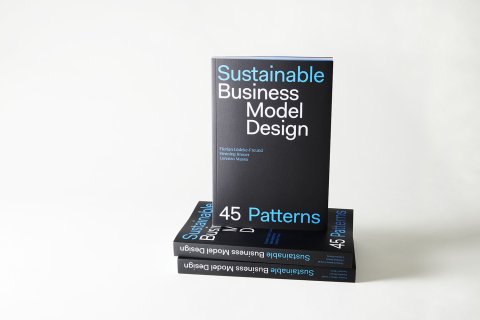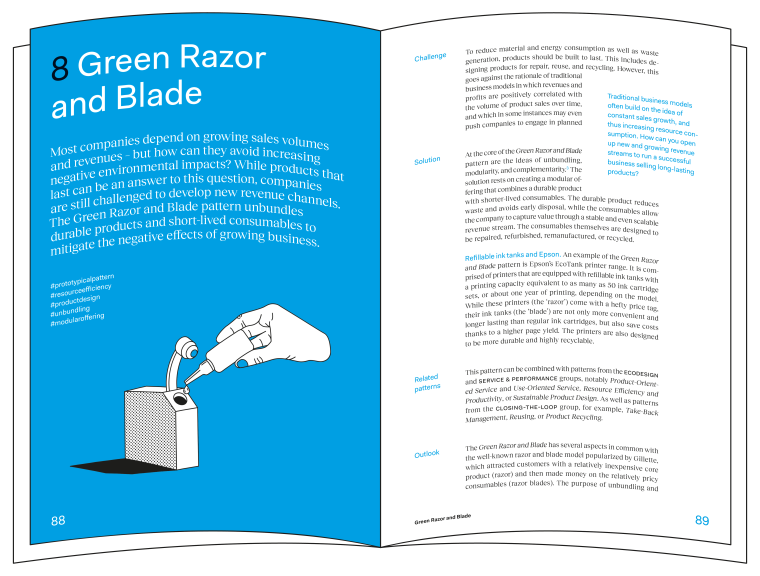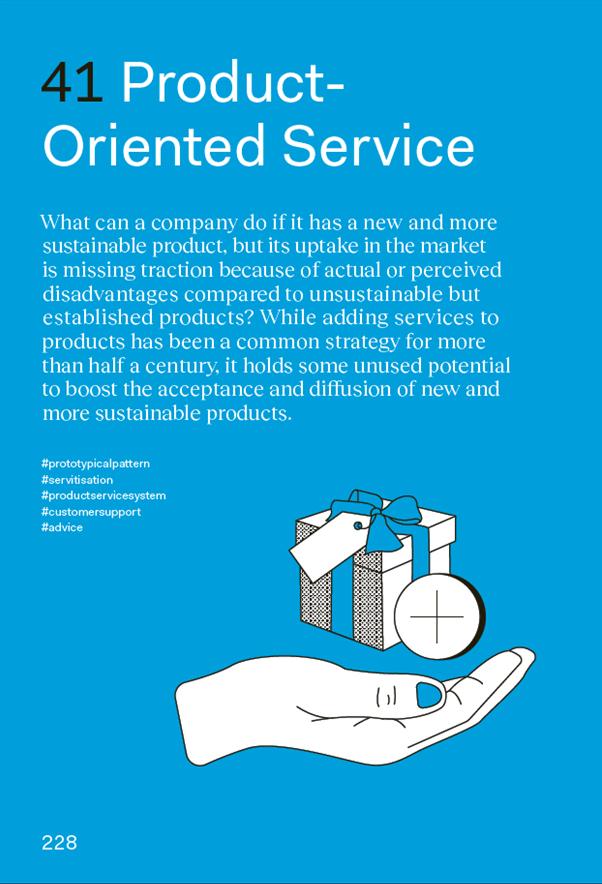Why Business Models Matter for Technology and Sustainability
It’s not just about technology
Technology alone has never been the solution, is not the only solution, and will never be the only solution. Forgive me. I am a social scientist, so maybe it is okay to start this way.
Blog article

It's not just about technology
Technology alone has never been the solution, is not the only solution, and will never be the only solution. Forgive me. I am a social scientist, so maybe it is okay to start this way.
Technology, such as a new generation of microelectronic microscopes, can of course help solve various challenges, such as ensuring the reliability of high-precision machines and increasing their efficiency. But it can also be the source of various problems, including an increase in resource and energy consumption, use of problematic materials, and so on. Whether the benefits of a new technology outweigh its downsides is a question of both how it is designed and how it is applied, respectively brought to market.
In addition, it is common wisdom in management and entrepreneurship that technology is never the only source of success. It always needs a business model which helps the company to bring it to customers and users. We can summarise this simple but hopefully intuitively appealing way of seeing things in a very simple equation:
technology + business model = your ability to help your customers
Now let us bring sustainability to the equation:
(technology + business model) * sustainability advantage = your ability to help your customers and tackle a sustainability challenge
The interplay of technology and business model can be leveraged by a so-called sustainability advantage, i.e., the potential to create ecological and social value. Such an advantage can enter the equation through technology design, engineering skills, green IT, etc. And it can enter the equation through sustainability-oriented business model design. Let us take a closer look at the latter aspect.
What is a sustainable business model? What kinds of sustainable business models do exist? And how can they improve your ability to help your customers and tackle a sustainability challenge?

It's also about business model design
A business model is typically defined at the level of a business unit, the whole company, or the business network, to explain how value is created for a company and its stakeholders. Various business model types exist, including product- or service-based business models, digital platforms, sharing models, and many more.1
Although they differ in how products, services, or product-service combinations are provided – for example by producing and selling goods or by creating online communities – they are always about delivering, capturing, and eventually creating value. Typically, we ask for the value created for the company and its customers.2
Building on this understanding, a sustainable business model is about creating value not only for a company and its customers but for various societal stakeholders and the natural environment. We can say that sustainable business models allow companies to maintain or even regenerate the diverse natural, social, and economic resources that society, economy, and companies rely on.3
Here is a simple example that we call 'green razor and blade': The challenge is that companies typically need to grow. How to do this without putting a greater strain on natural resources? The concrete problem can be reformulated as developing new revenue sources without increasing resource consumption to the same extent as revenue. A solution to this can be to design products in a modular manner and to offer the individual modules separately from one another. Not only can short-lived consumables be offered separately from long-living machines, such as printers and ink, but the modular design can also increase the degree of reusability of individual components, such as refillable ink tanks. Companies like Epson and SodaStream make use of this pattern. The latter apply it very successfully to sparkling water makers. Stronger decoupling of business and negative environmental effects can be achieved, for example, by switching from product to service offerings.
Another example is called the 'product-oriented service business model': These days, we seem to be rediscovering renewable energies in view of the multiple, political, energy, and climate crises. In this context, you can try to offer solar panels and hope that customers are willing to buy them and contribute to energy independence. But you can also offer a full-service package including most of the paperwork related to becoming an energy producer as well as installing and maintaining a solar power system. These models, the pure sale of a technical product on the one hand, and a more elaborate service package, on the other hand, differ fundamentally in terms of the underlying business models and value drivers. The probability of acceptance, especially on the part of the user, is certainly higher in the full-service case.4
These are very simple examples of how changing the business model logic away from pure product sales to sustainability-oriented design and service offerings can make a big difference in terms of sustainable production and consumption.

It's about getting the 'technology + business model' formula right
Coming back to the 'technology + business model' formula, we see that it is about both the technology and the business model and about understanding potential sources of a sustainability advantage. Given that solar panels hold some sustainability potential such as reducing CO2 emissions (of course, we may not ignore the problems related to producing and disassembling solar panels), it is not enough to simply produce and offer them. The same holds for modular product design.
Potential users may struggle with seeing their personal benefits, such as savings on their energy or maintenance bills. Sometimes they need support because of administrative barriers or internal purchasing routines. And sometimes they do not want to worry at all. In all these cases, it is about finding the right business model to make the technology more attractive and allow for sustainability effects to unfold, for example reducing energy-related CO2 emissions or material consumption. Diverse business model patterns are available to create a suitable 'technology + business model' formula in both B2C and B2B contexts.5
Outlook: 45 patterns for sustainable business model design
We asked ourselves which business models with a sustainability orientation are known. The result is an overview of 45 so-called sustainable business model patterns. Each pattern represents a generalized problem-solution combination, i.e. a business model-based solution to a specific sustainability problem. The problem-solving knowledge contained in these patterns often comes from observing pioneers who have broken completely new ground in their industries and thus, for example, revolutionized the way a product is manufactured or offered.
We have classified the 45 patterns into a total of 11 groups. These groups differ in the type of challenge that the patterns in a group are trying to solve. For example, various patterns help close material and energy cycles. These are grouped as "Closing the Loop" patterns. Furthermore, several patterns address social challenges, such as the six patterns that provide access to products and services for disadvantaged social groups. These were grouped as "Access Provision" patterns.
On an even higher level, the many patterns can easily be categorized along the three well-known pillars of sustainable development: ecological, social, and economic value creation. A free introduction to this approach to sustainable business model design and the various patterns we found is available at www.sustainablebusiness.design.
References
1 Gassmann, O., Frankenberger, K., & Choudury, M. (2021). Geschäftsmodelle entwickeln: 55+ innovative Konzepte mit dem St. Galler Business Model Navigator (3., überarbeitete und erweiterte Auflage). Hanser.
2 Massa, L., Tucci, C. L., & Afuah, A. (2017). A Critical Assessment of Business Model Research. Academy of Management Annals, 11(1), 73–104.
3 Schaltegger, S., Lüdeke-Freund, F., & Hansen, E. G. (2016). Business Models for Sustainability: A Co-Evolutionary Analysis of Sustainable Entrepreneurship, Innovation, and Transformation. Organization & Environment, 29(3), 264–289.
4 Lüdeke-Freund, F., Breuer, H., & Massa, L. (2022). Sustainable Business Model Design—45 Patterns (First edition). www.sustainablebusiness.design
5 Lüdeke-Freund et al., 2022

Author
Prof. Dr. Florian Lüdeke-Freund
Florian Lüdeke-Freund is a Professor of Corporate Sustainability at ESCP Business School, Berlin, Germany. He is a member of ESCP’s European Sustainability Department and Academic Director of the MSc Sustainability Entrepreneurship & Innovation. Florian’s research and teaching focus on corporate sustainability management, sustainability entrepreneurship, and sustainable business models. He is Associate Editor at Journal of Business Models, Editorial Review Board Member at Organization & Environment, and Co-Chair of the International Conference Series on New Business Models. Florian founded the international research hub www.SustainableBusinessModel.org. His latest book is on Sustainable Business and Design and offers a rich overview of patterns for sustainable business models. Full CV and publication list: www.LuedekeFreund.com.
